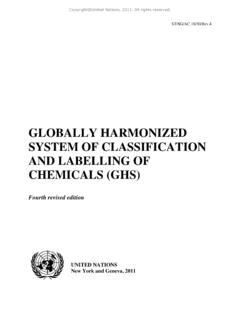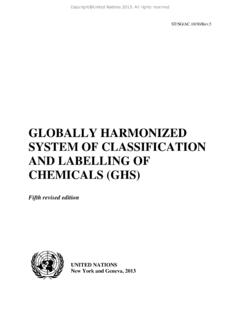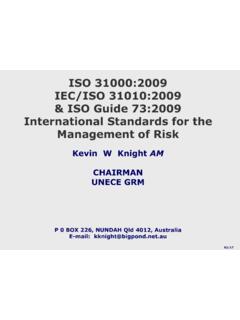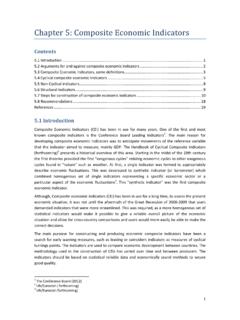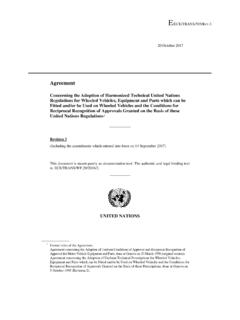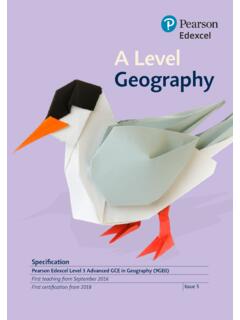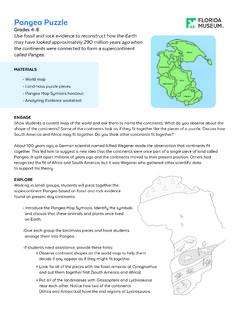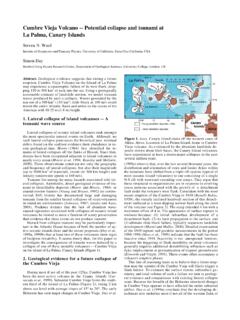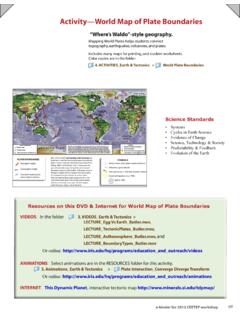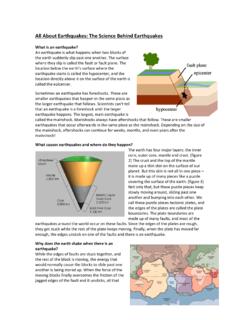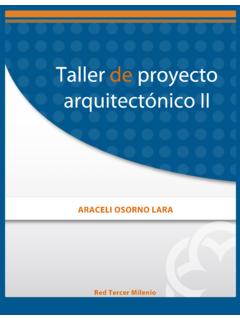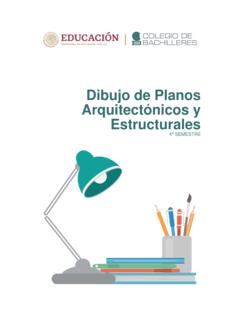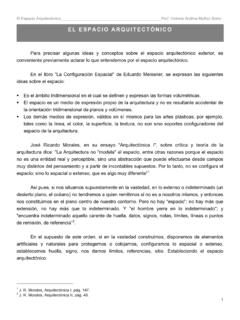Transcription of GEOLOGICAL EXPLORATION AS PER UNFC STAGES AND …
1 GEOLOGICAL EXPLORATION AS PER UNFC STAGES AND FIELD GUIDELINES By Deputy Director General GEOLOGICAL Survey of India India Produces as many as 84 minerals National Mineral Inventory database is maintained by: IBM for 70 non coal solid minerals GSI for coal and lignite Dept. of Petroleum & Natural Gas for oil and gas Both government and private EXPLORATION agencies followed the classification of mineral reserves/resources evolved by GSI in 1981 Prior to 1981 No Nationally accepted system National classification system is 2 dimensional system with no distinction between technical and economic with an emphasis on GEOLOGICAL axis Overview CLASSIFICATION OF MINERAL RESOURCES Basis of Classification consideration Quantum of EXPLORATION Geologic nature (mode of occurrence, shape, depth etc) Common to most system of classification economic consideration Mining Technology Processing technology (emphasis varies on different system of classification)
2 DIAGRAMMATIC REPRESENTATION OF NATIONAL ORE / RESOURCES CLASSIFICATION MINING PHASE DETAILED EXPLORATION PHASE RECONNAISSANCE & PROSPECTING PHASE Identified Resources Undiscovered Resources (Tonnage) ( Based on surmise) Ore Reserves ( Tonnage and Grade) Developed Ore ( Mining Reserves with Design, Dilution & Extraction Factor) Undeveloped Ore ( In Situ Reserves) Demonstrated Fully Partly Proved Probable Possible Prospective ( In known areas) Prognostic ( In unknown areas) COMPARISON OF CONVENTIONAL INTERNATIONAL AND NATIONAL CLASSIFICATION SYSTEM (1981) CLASSIFICATION NATIONAL CLASSIFICATION Category Purpose Permissible Error Category Purpose Permissible Error Category Purpose Permissible Error A Production planning Mine protection 15-20 % Developed Production planning and mining 0-10 % Measured 0-20 % B Estimating mining investment and planning 20-30 % Proved Investment decision mine planning 10-20 % Indicated 20-40% C1 Long term development plans for projecting EXPLORATION needs.
3 30-60 % Probable Backup tonnage to proved reserves for investment decision for mine development 20-50 % Inferred Planning for further EXPLORATION C2 Planning further prospecting 60-90 % Possible First quantitative approximation for planning for national resources survey STAGE OF ACTIVITIES OBJECTIVE WORK COMPONENT E A R LY RECONNAISSANCE (P -I) Regional evaluation, for identification of a favourable GEOLOGICAL environment. Synthesis of GEOLOGICAL aero geophysical & remotely sensed information data, creation of data base for further study. EXTENDED RECONNAISSANCE (P -II) Identification of EXPLORATION target usually favourable litho pack, tectonic domain or structure. Intensive reconnaissance including pitting, trenching & scout drilling. STAGES IN PROSPECTING / EXPLORATION IST STAG E PRELIMINARY EXPLORATION ( E I) Broad determination of strike extension, width of potential mineralized zone, determination of grade of mineralization, defining possible category of resource as well as conditional resource.
4 GEOLOGICAL , geochemical and geophysical method, pitting, trenching & sinking of wide spaced drill holes. 2ND STAG E PRELIMINARY EXPLORATION (E -II) Assessment of reserves & average grades of ores up to the probable category provides basis for prefeasibility study. Systematic drilling, boreholes designed to intersect ore bodies at least in bed level, mineralogical/chemical characteristics of the ore zone studies. The resource estimation may or may not be done on the basis of the economically viable cut off grade. Universally acceptable and internationally applicable scheme for the classification and reporting of mineral resources / reserves Generic principle based system in which quantities are classified, using numerical coding system, on the basis of the three fundamental criteria: and social viability (E), project status and feasibility (F) and knowledge (G) Combinations of these criteria create a three dimensional system.
5 United Nations Framework Classification for Mineral Reserves and Resources and Fossil Energy 2009 (UNFC 2009) Status of Implementation of UNFC in India Government of India gave approval for adoption of UNFC in 2003 Field guidelines as per UNFC norms formulated by expert group in 2001 to be followed by all EXPLORATION agencies Changing to UNFC bent with host of complexities GSI converting all its earlier estimated resources to UNFC numerical codes by following these field guidelines GSI carrying out present EXPLORATION as per UNFC STAGES following the field guidelines and classifying the estimated resources by assigning appropriate UNFC numerical Codes. EXPLORATION carried by Private EXPLORATION agencies are not in full conformity with UNFC norms UNFC STAGES IN PROSPECTING / EXPLORATION The GEOLOGICAL EXPLORATION has been divided into four successive STAGES of GEOLOGICAL assessment in order of increasing details Minimum distance of observation points is recommended for the each of the four STAGES depending on the tectonic setting and type of mineralization Classification of activities in each step of GEOLOGICAL EXPLORATION depend upon the basis of works, and the resultant status of resource evaluation Where GEOLOGICAL studies have been carried out and an estimate of the quantity of mineralization is possible (volume, tonnes, grade/quality etc.)
6 Then classification takes place on the GEOLOGICAL axis on the basis of the level of detail of the studies and the degree of confidence in the GEOLOGICAL model RECONNAISSANCE STAGE (G-4) Means the systematic process of identifying areas of enhanced mineral potential on a regional scale based primarily on results of regional GEOLOGICAL studies The objective is to identify mineralized areas worthy of further investigation towards deposit identification. Estimates of quantities (during EXPLORATION phase) should only be made if sufficient data available. Estimated quantities associated with a potential deposit, based primarily on indirect evidence. EXPANSION OF G4 TO ACCOUNT FOR UNCERTAINTY In some situations, it may be helpful to express a range of uncertainty for quantities that are classified on the GEOLOGICAL axis as G4, EXPLORATION Projects. In such cases, the following specification shall apply: a) : incremental amount to such that + equates to a best estimate of the quantities; b) : low estimate of the quantities; c) : incremental amount to + such that + + equates to a high estimate of the quantities.
7 Category G4, when used alone, shall reflect the best estimate and is equal to + PROSPECTING STAGE (G-3) Prospecting is the systematic process of searching for a mineral deposit by narrowing down areas of promising enhanced mineral potential The objective is to identify a deposit which will be the target for further EXPLORATION Quantities estimated for the deposits are with a low level of confidence Estimates of quantities are inferred, based on interpretation of GEOLOGICAL , geophysical and geochemical results GENERAL EXPLORATION STAGE (G-2) General EXPLORATION involves the initial delineation of an identified deposit The objective is to establish the main GEOLOGICAL features of a deposit, giving a reasonable indication of continuity and providing an initial estimate of size, shape, structure and grade The degree of accuracy should be sufficient for deciding whether a Pre feasibility study and Detailed EXPLORATION are warranted Quantities estimated for the deposits are with a moderate (medium) level of confidence Estimates of quantities are indicated, based on interpretation of GEOLOGICAL , geophysical and geochemical results DETAILED EXPLORATION STAGE (G-1)
8 Detailed EXPLORATION involves the detailed three dimensional delineation of a known deposit Size, shape, structure, grade, and other characteristics of the deposit are established with a high degree of accuracy A decision whether to conduct a Feasibility Study can be made from the information provided by Detailed EXPLORATION Quantities estimated for the deposits are with a high level of confidence Estimates of quantities are measured, based on interpretation of GEOLOGICAL , geophysical and geochemical results Four STAGES of GEOLOGICAL Assessment Provide Four Resource Categories reflecting increasing degree of GEOLOGICAL knowledge and confidence which are: Reconnaissance (G 4 Stage) Reconnaissance Resource Prospecting (G 3 Stage) Inferred Resource (333) General EXPLORATION (G 2 Stage) Indicated Resource (332) Detailed EXPLORATION (G 1 Stage) Measured Resource (331) After Field project status and feasibility (F), Economic and social viability (E) studies Mineral Reserves are classified as: Proved Mineral Reserves: code 111 Probable Mineral Reserves: codes 121 + 122 Feasibility Mineral Resources: code 211 Pre Feasibility Mineral Resources.
9 Codes 221+222 TERMS AND CODES IN UNFC 1997 17 Indian Bureau of Mines ECONOMIC AXIS FEASIBILITY AXIS GEOLOGICAL AXIS CODE Economic Feasibility Study & Mining Report Detailed EXPLORATION 111 Economic Pre-feasibility Study Detailed EXPLORATION 121 Economic Pre-feasibility Study General EXPLORATION 122 Potentially Economic Feasibility Study & Mining Report Detailed EXPLORATION 211 Potentially Economic Pre-feasibility Study Detailed EXPLORATION 221 Potentially Economic Pre-feasibility Study General EXPLORATION 222 Intrinsically Economic GEOLOGICAL Study Detailed EXPLORATION 331 Intrinsically Economic GEOLOGICAL Study General EXPLORATION 332 Intrinsically Economic GEOLOGICAL Study Prospecting 333 Undetermined Economic GEOLOGICAL Study Reconnaissance 334 Aligning Indian National Classification system to UNFC 2009 National Classification system yet to be aligned with UNFC 1997 and UNFC 2009 Application of UNFC 2009 to classify quantities based on aligned system can be performed either by.
10 A)first generating estimates using the aligned system and then assigning those estimates to the appropriate UNFC 2009 class or sub class b)By generating the estimates directly in UNFC 2009 by applying the relevant specifications from the aligned system Preparation of Bridging Document essential for proper alignment of National System to UNFC 2009 Mapping of National System to CRIRSCO Template and UNFC 2009 Classes and Categories yet to be carried out Class Code EFG Total Resources Mineral Reserve Proved Mineral Reserve 111 Probable Mineral Reserve 121 + 122 Mineral Resources Feasibility Mineral Resource 211 Prefeasibility Mineral Resource 221+222 Measured Mineral Resource 331 Indicated Mineral Resource 332 Inferred Mineral Resource 333 11/7/2013 19 Not available in the primary classes of UNFC 2009 Available in UNFC-2009 through foot note Indicated EXPLORATION Results Inferred Measured Probable Proved (CRIRSCO Template)


